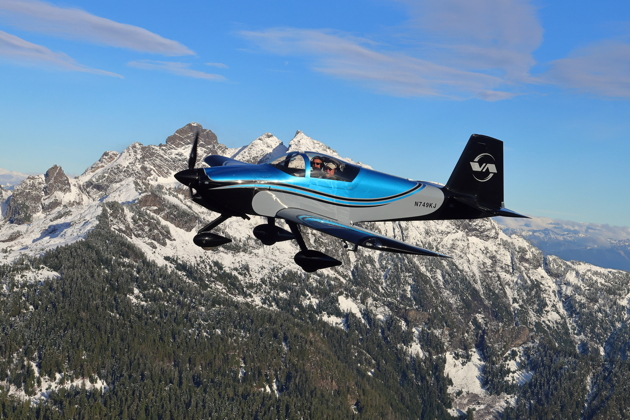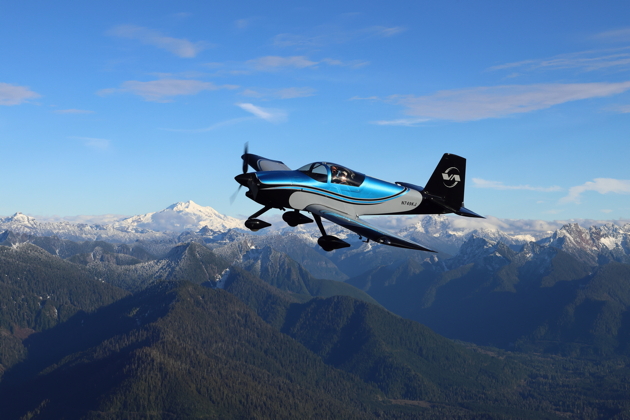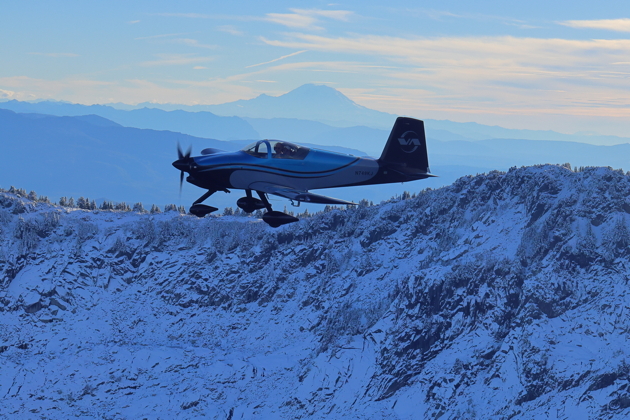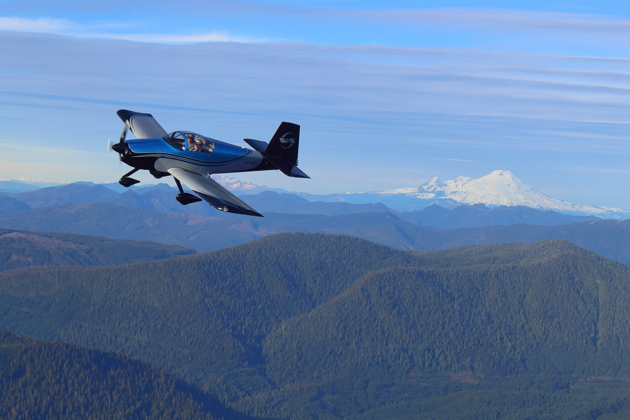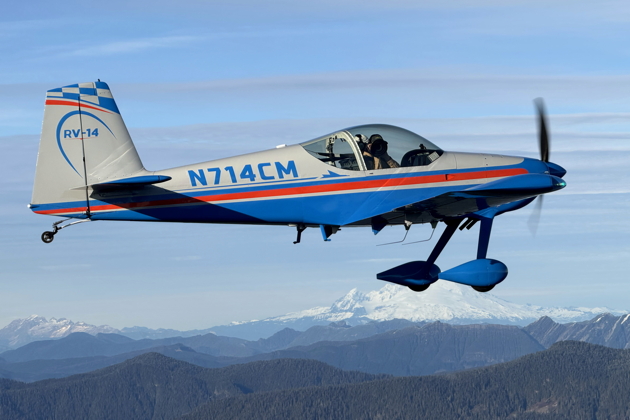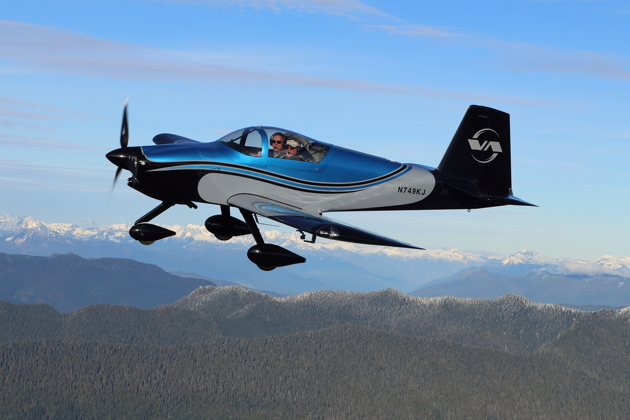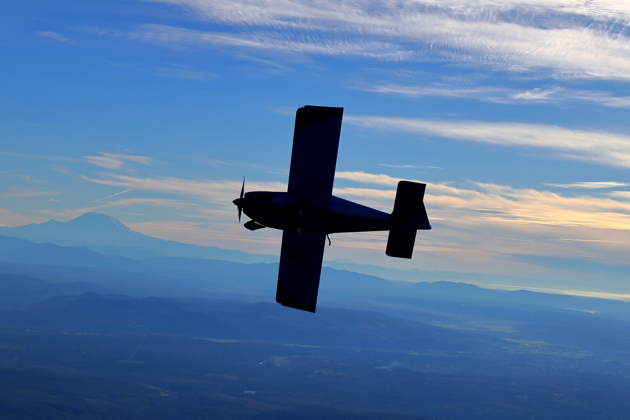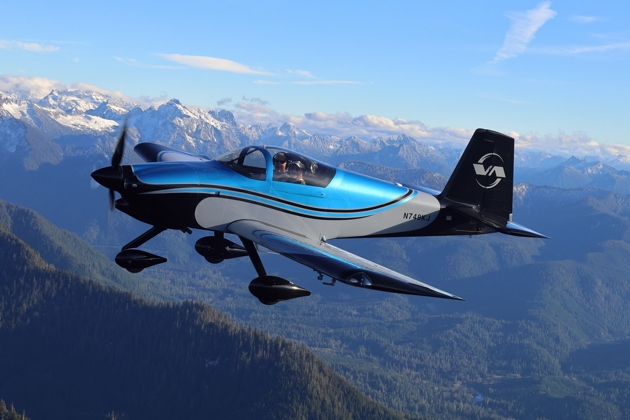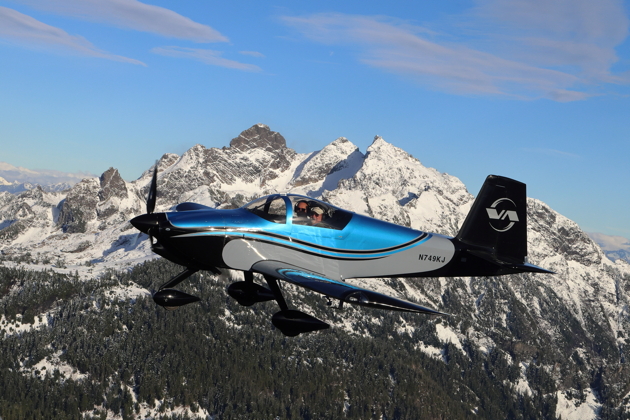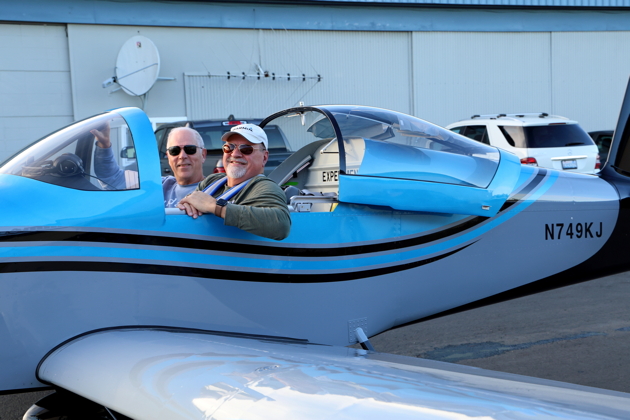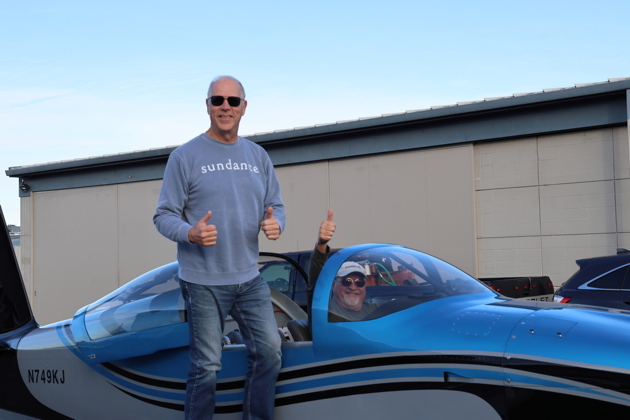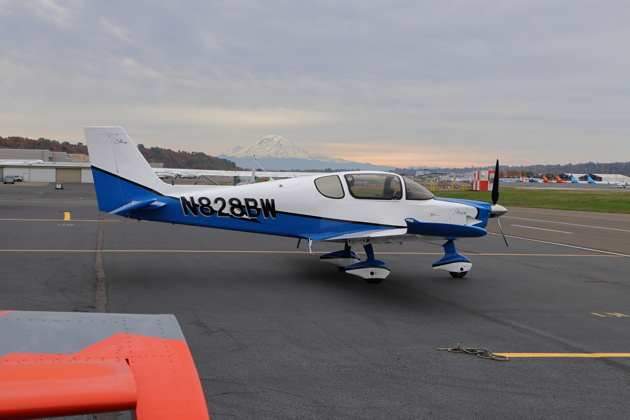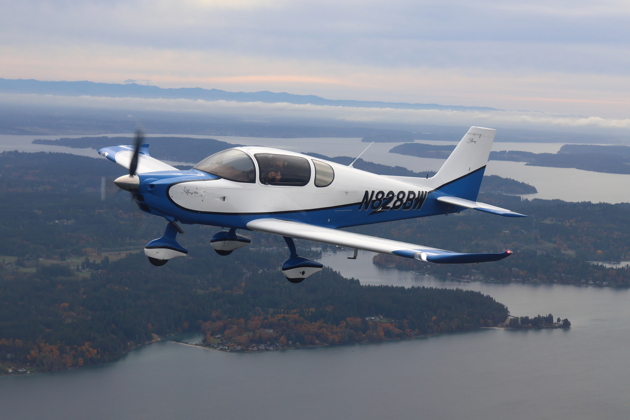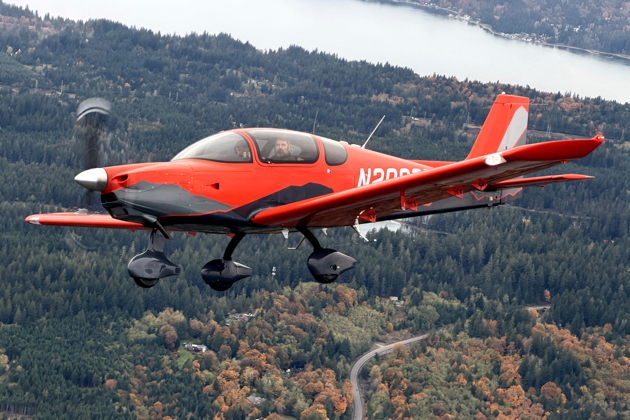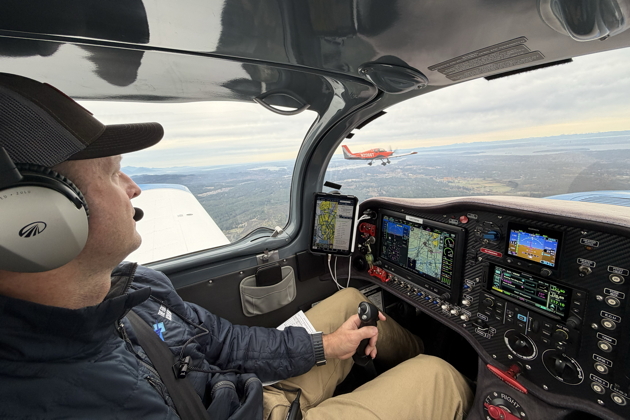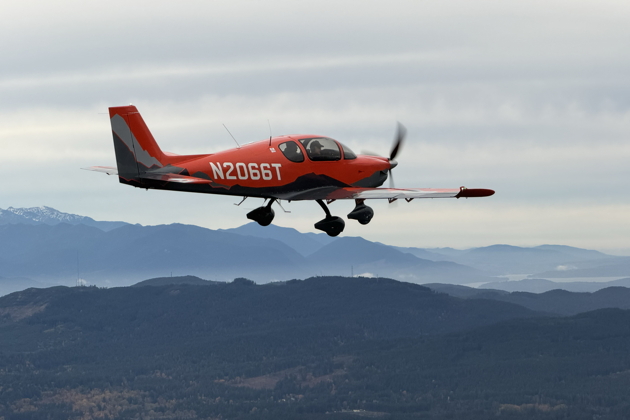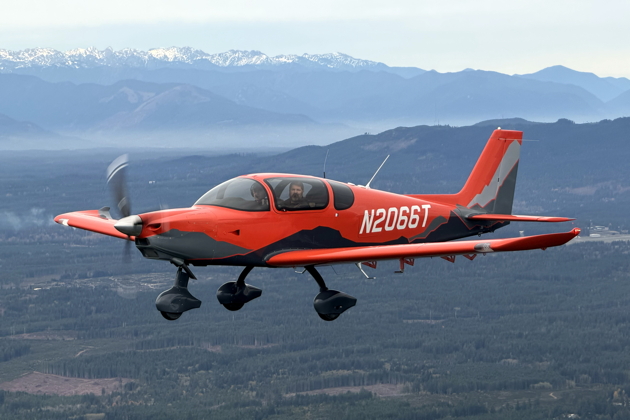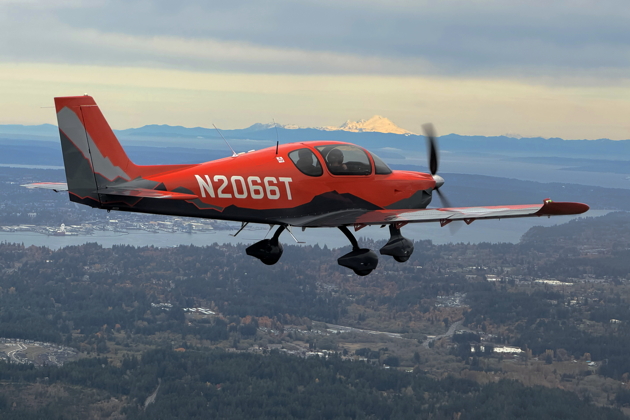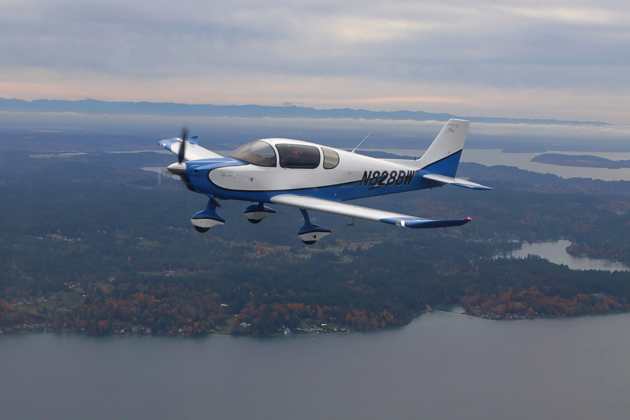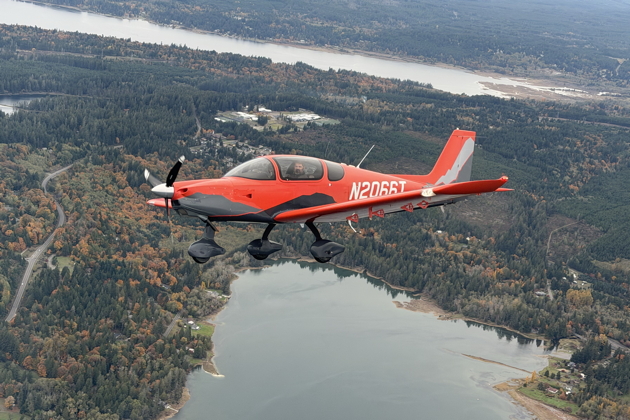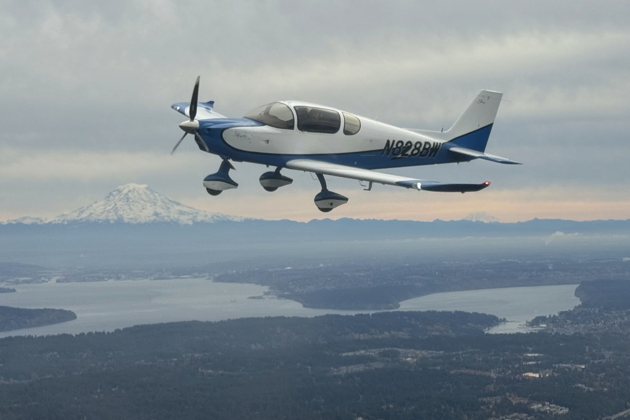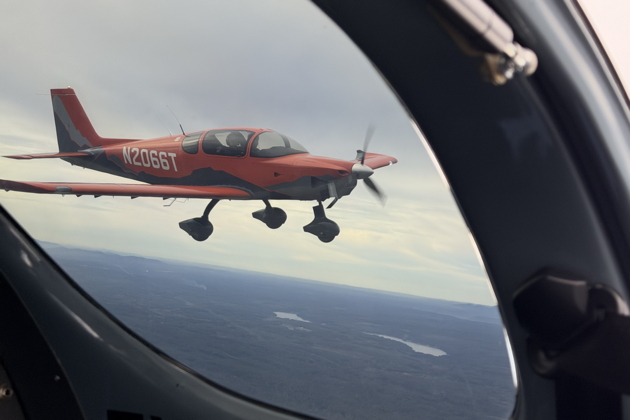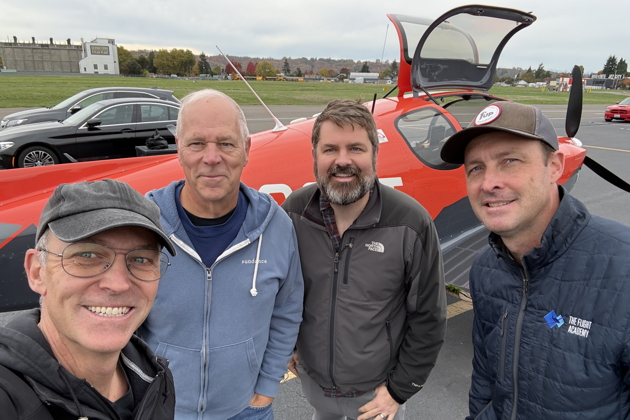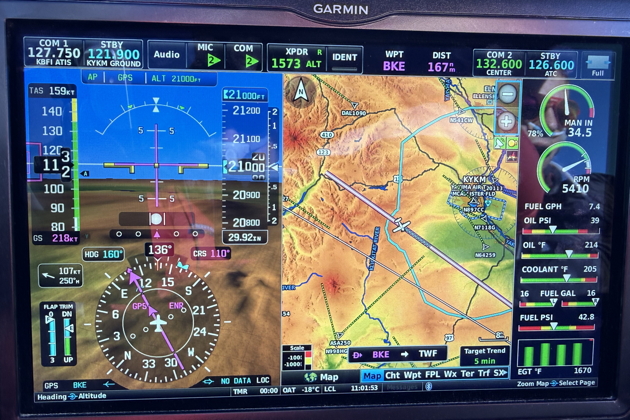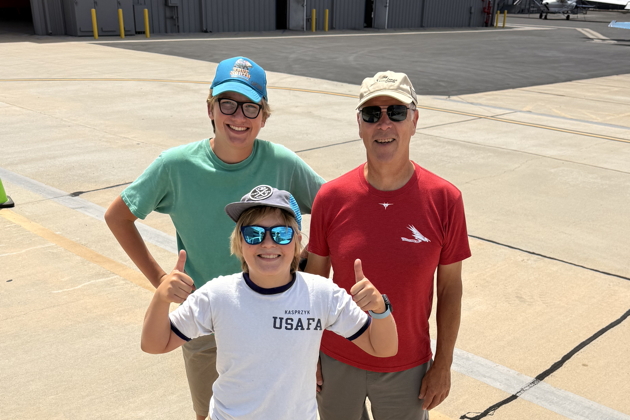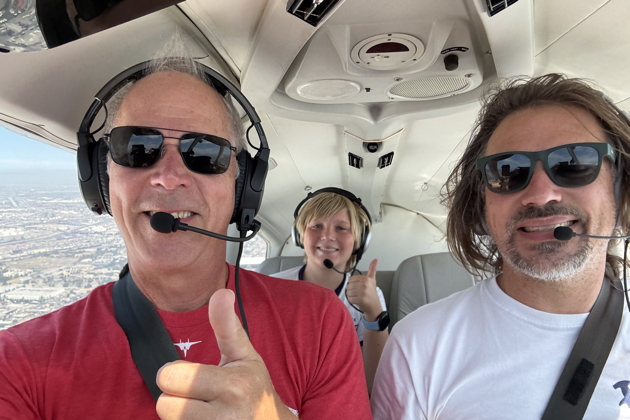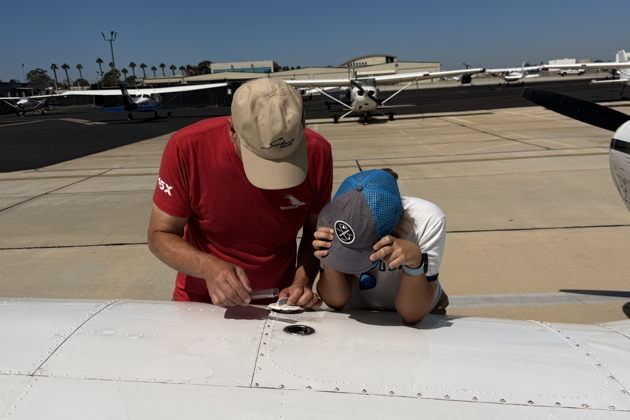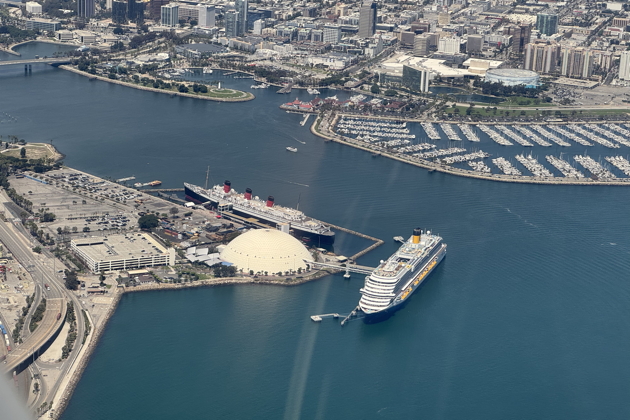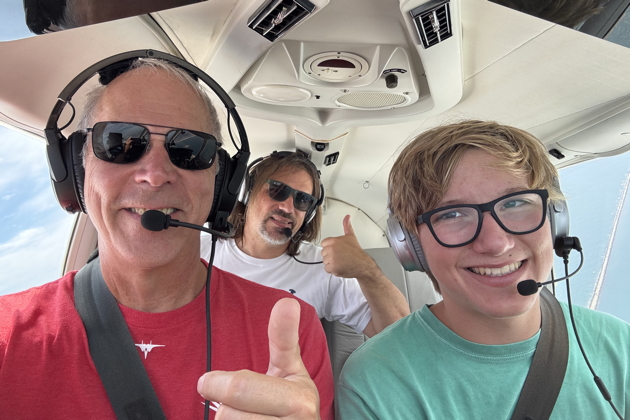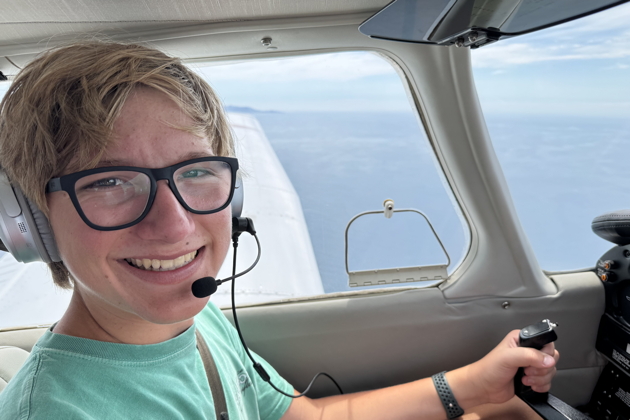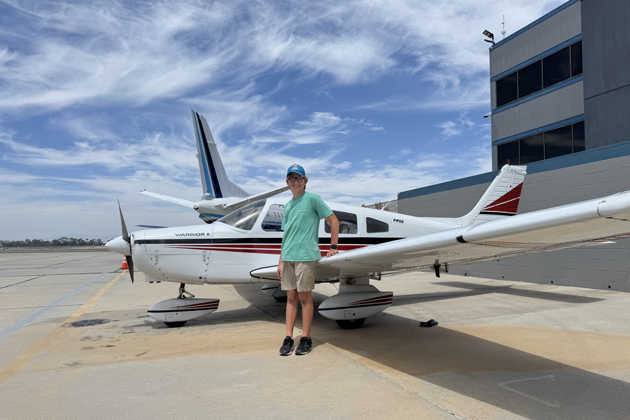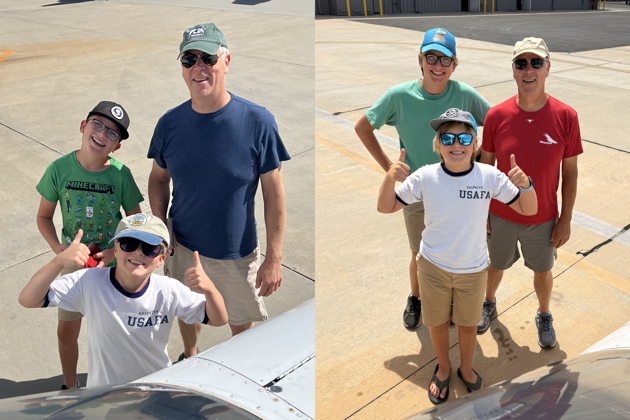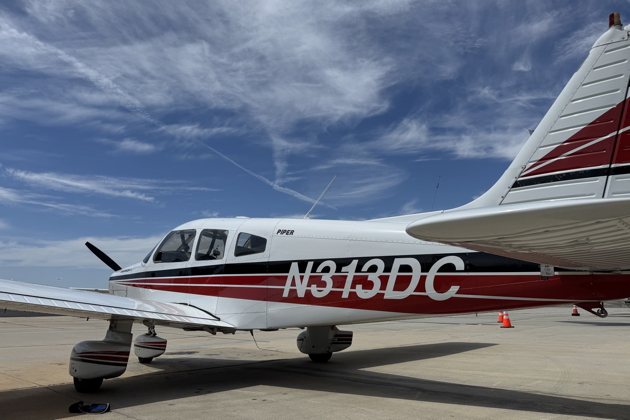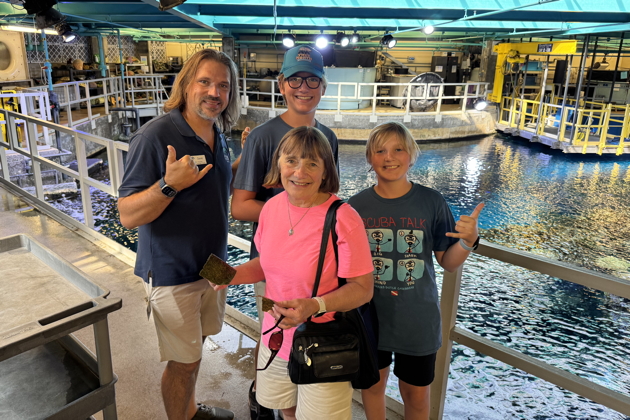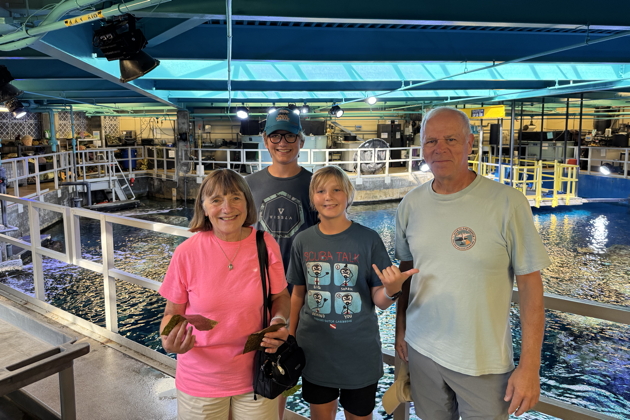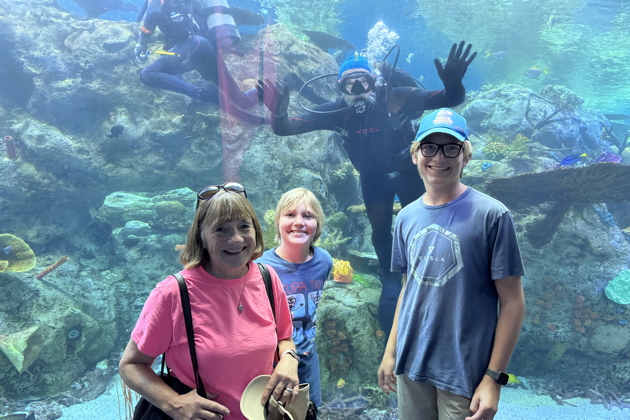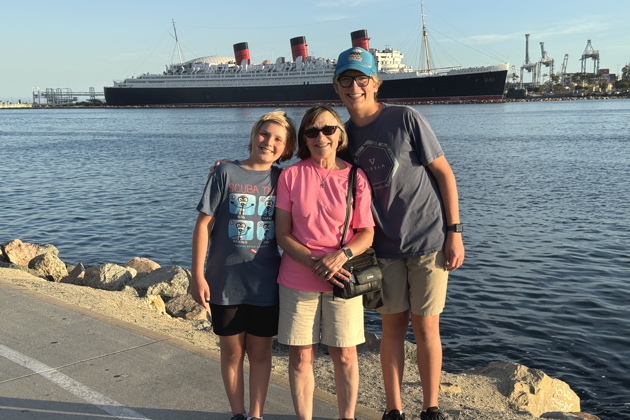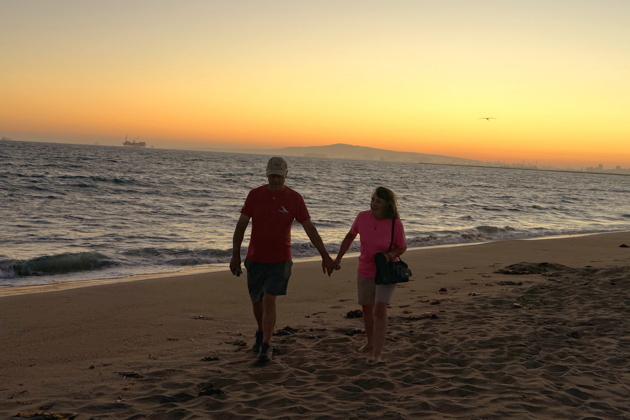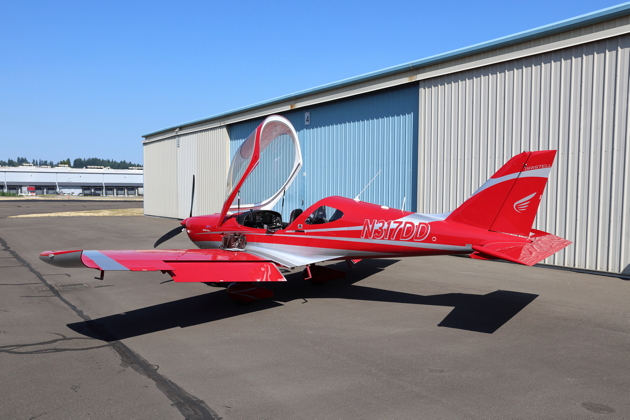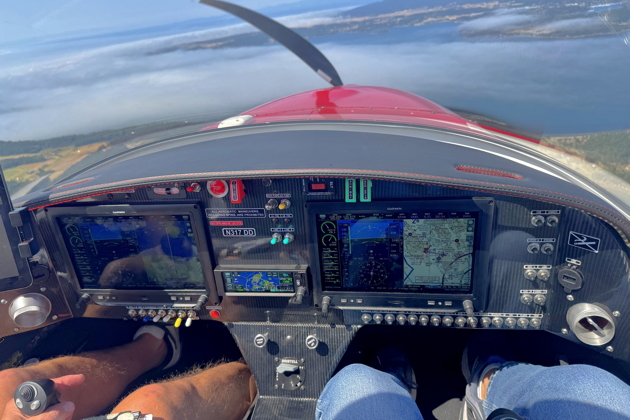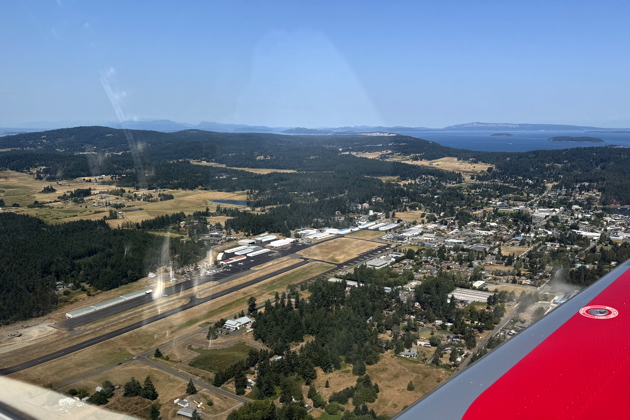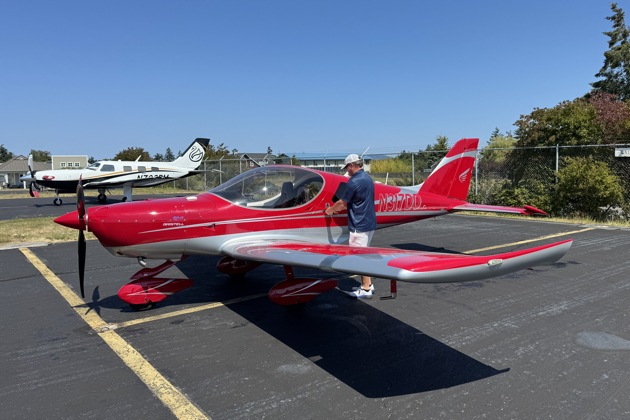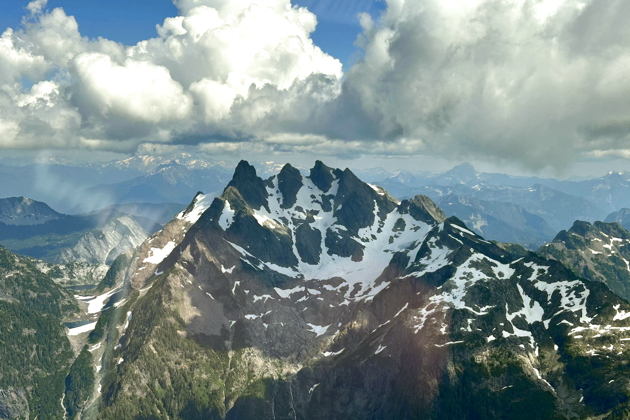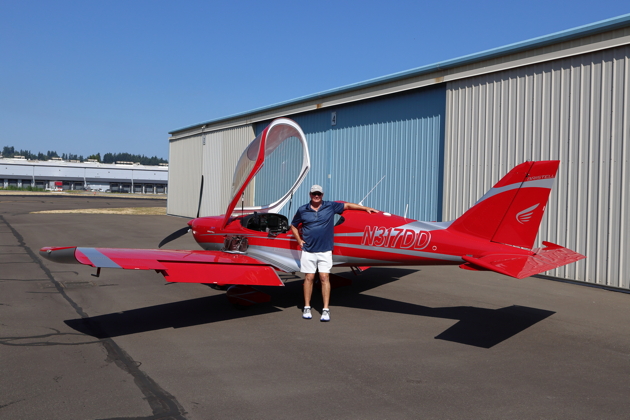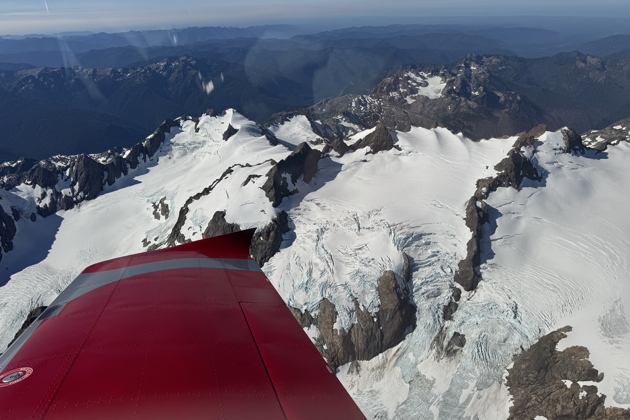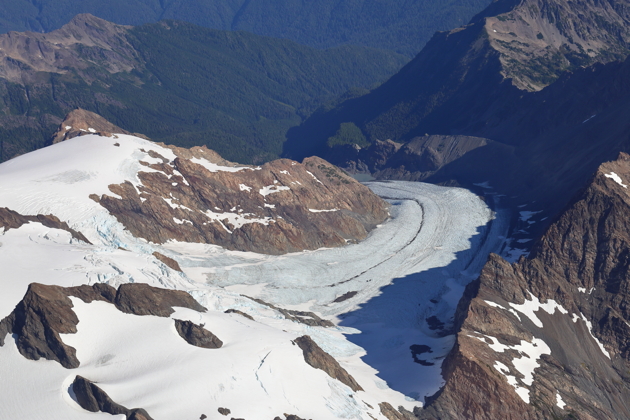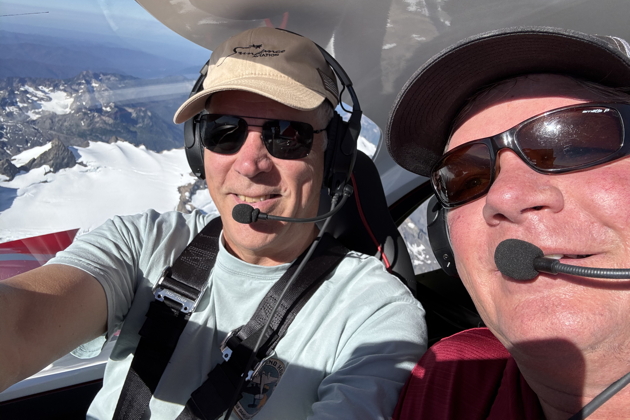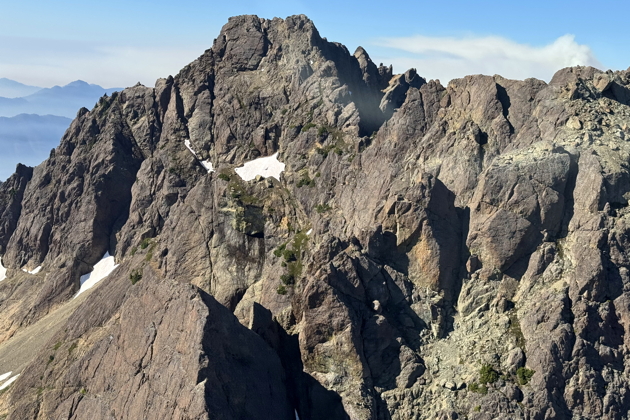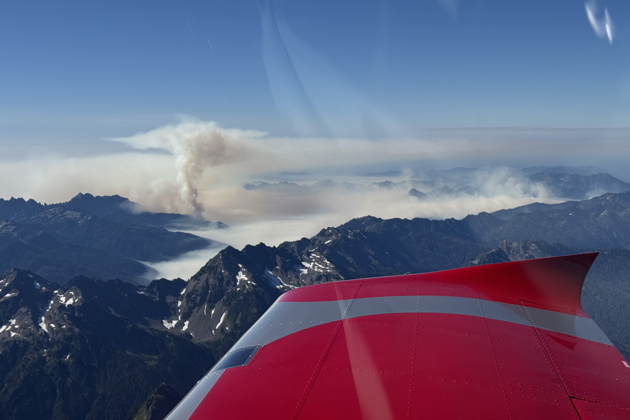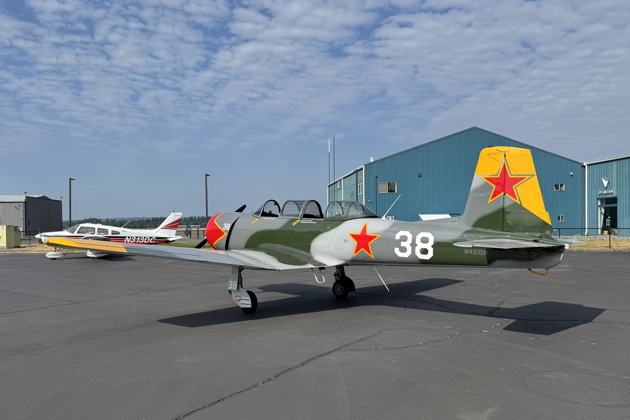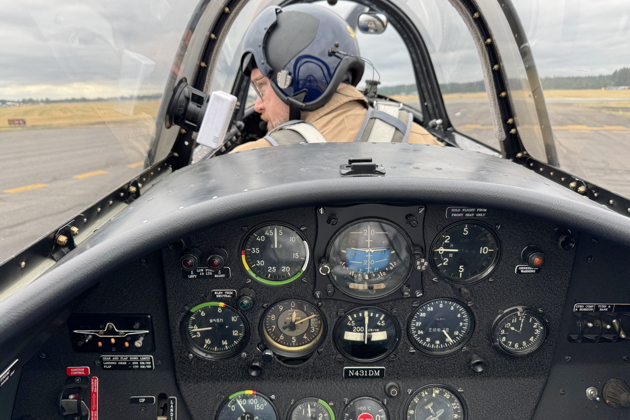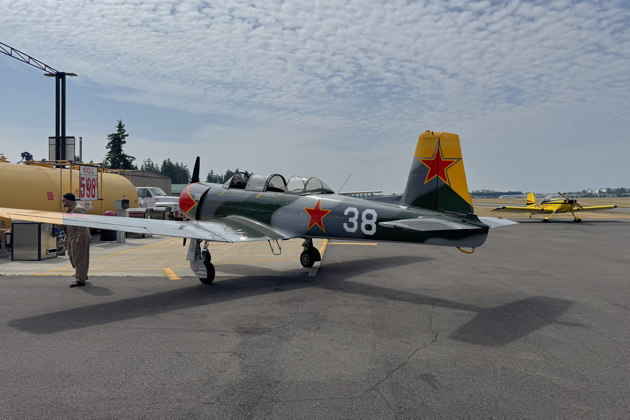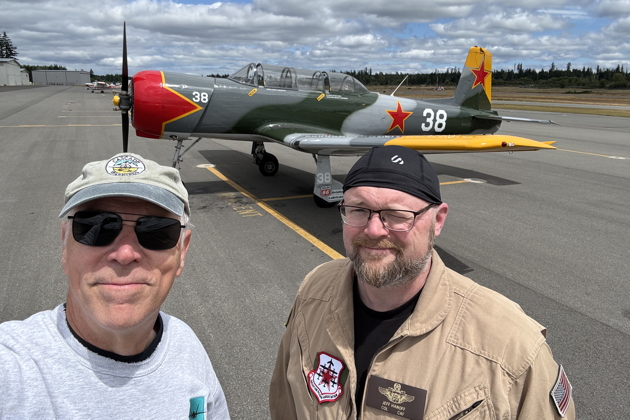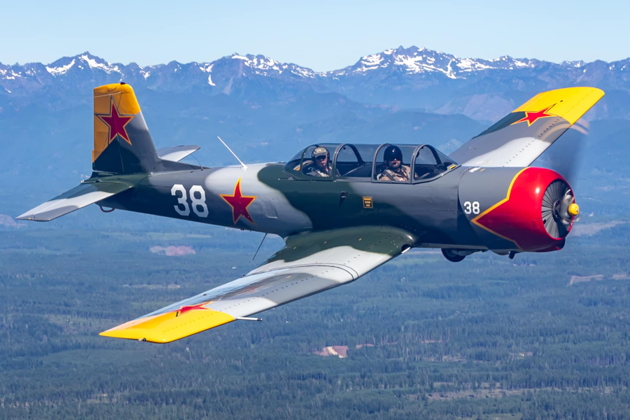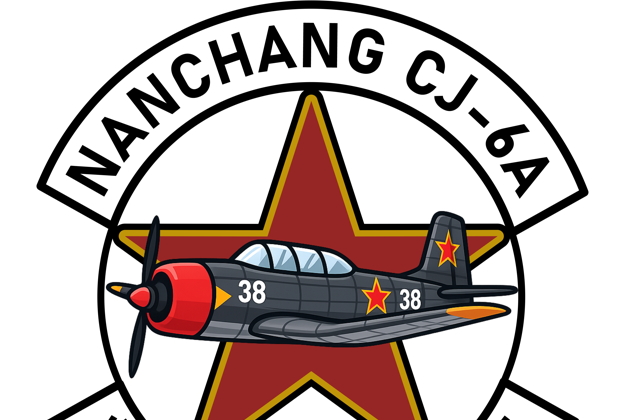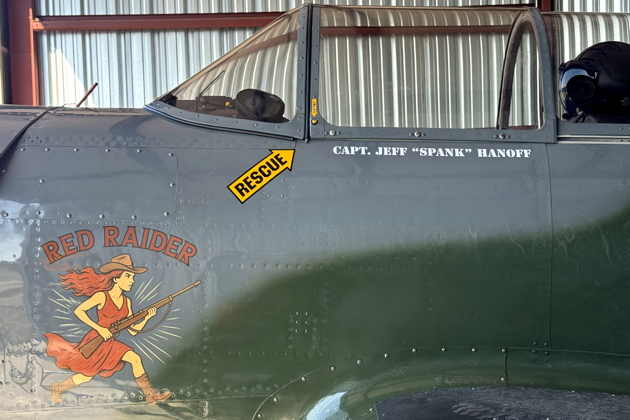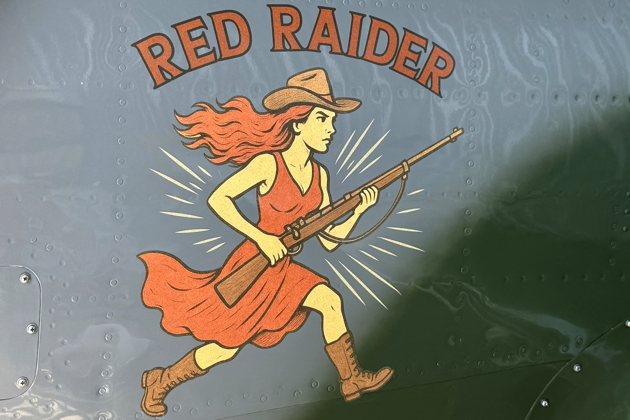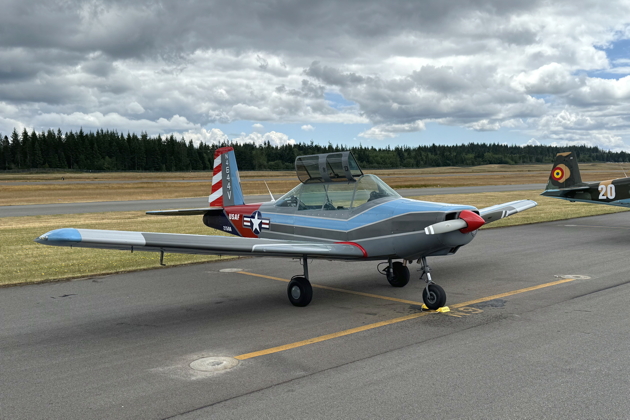FlightLog Archive
∟Aircraft Flown
Flying the RV-9A - Nov 2025
I have really enjoyed flying many of the Van's Aircraft designs, including the RV-6, RV-7, RV-8, RV-10, RV-12 and RV-14. Having never flown the RV-9 series, I was intrigued when I saw an article in the May 2025 EAA Sport Aviation magazine about an RV-9A built and flying here in the Puget Sound area. I contacted the owner, Steve, and found out he was flying out of nearby Paine Field, and wouldn't mind showing me his RV-9A. I mentioned to Steve that I enjoyed flying RVs, and also teaching formation flying. Steve mentioned that he was looking to get some good air-to-air photos of his bird, so we coordinated to try to fly a formation photo shoot when our pilot schedules, compatible aircraft availability and weather allowed.
Steve mentioned that his friend Mike owned an RV-14 that would be compatible with the RV-9A, so we set up a formation flight on a rare November day with a forecast break in the weather. I met Steve at his hangar at Paine Field, and checked out his gorgeous workmanship, paint job and avionics suite in his RV-9A. I'd recently been flying Sling TSi's, a Bristell and RV-12s that also had dual large G3X displays, Garmin 650xi navigators and a Garmin autopilot, so I felt right at home in the cockpit. When Mike arrived with his RV-14 from Frontier Airpark, I briefed him on the formation plan, and briefed his right-seater Dennis on the operation of my Canon R6 and my new anti-reflection hood to take crisp in-flight photos of the RV-9A.
Steve and I took off in trail in the RV-9A from runway 16R, with Mike leading and initially climbing away from us with the 210-HP IO-390 in his RV-14, so I used cut off geometry in the turn to close with our IO-320, then had Mike set up a 110-knot climb speed for us to rejoin. I rejoined straight ahead to close formation as we climbed toward the Cascade foothills and Mt. Pilchuck. I felt right at home with the very smooth flight controls, and easily set up in close fingertip on Mike's right side as we climbed to 6000 feet. As briefed, Mike flew three shallow-banked 360s for in-flight photos of the RV-9A between Mt. Pilchuck and Three Fingers mountain, while Steve took iPhone photos of Mike's RV-14 as I hung in close. We hit a bit of turbulence over the mountains, but I had enough control to easily stay in tight. After Dennis noted that he'd successfully taken a ton of shots, I flew in loose formation in the descent back to Paine Field. I had briefed Mike to request an overhead pattern with Paine tower, since they were quite familiar with formation flying from the numerous warbirds based at Paine, so we flew up initial, pitched out and landed on 16R, debriefed and viewed a few quick iPhone photos. The RV-9A, like all RV-series aircraft is a joy to fly, with smooth, responsive flight controls, great visibility, sticks vs yokes and impressive cockpit avionics. Thanks for the RV-9A flying opportunity, Steve, I'll gladly fly her anytime!
The close formation flying and great weather provided a perfect opportunity for excellent photos, both from the Canon and the iPhone Pros. Steve was so pleased with the photos, he updated the main image on the Aircraft For Sale website with one of the images from our photo shoot. He's actually selling his gorgeous RV-9A, with a plan to fly an RV-14 as he builds an RV-15, once the RV-9A is sold.
Sling TSI Formation - Oct 2025
I had been enjoying flying in both Rob Smith's and Chris Terrell's impressive Sling TSi's, and mentioned to them both that I was available to teach them in the fine art of formation flying if they were interested. They both responded with enthusiasm, and I was able to convince one of my other formation instructors, Troy 'T-Lar' Larson, to join the effort. However, trying to coordinate four pilots' schedules, two new Sling TSi's availability and the Northwest weather for formation training gets tough, but we pulled it off!
I drove to Boeing Field, met with Rob Smith at his Sling TSi in NE parking. 'T-Lar' Larson had a break in his busy schedule and showed up soon after, as we waited for Chris Terrell to takeoff from fog-shrouded Harvey Field. Chris filed IFR and was only slightly delayed, and then became one of the first aircraft to land on the newly opened runway 32R at KBFI. We briefed the formation flight details in T-Lar's car, and got to experience Rob jumping his Sling TSi battery after it ran down loading databases.
Chris and I took off as #2 in Sling TSi N828BW at noon from BFI’s runway 32L, in trail with Rob Smith and T-Lar instructing in Sling N2066T. Since this was the first Sling formation training for both Rob and Chris, we worked on the basics. Chris first flew fingertip, route and cross-unders with Rob/T-Lar leading, using Port Orchard as our reference airspace center. I emphasized smooth movements and slow corrections, then demonstrated a pitchout and rejoin to Chris, then swapped leads. We led fingertip, route, cross-under and trail practice for Rob, plus we led a pitchout and rejoin. We again swapped leads, and cruised back in close formation to Boeing Field, where Chris and I dropped back for a landing in trail on runway 32L, coordinating with tower as a flight, to both be on the runway at the same time.
We enjoyed great formation flying and lots of learning today for Chris and Rob, and they are both ready for more!
Epilog
A few days after our formation flight, Rob Smith took N2066T on a flight demostrating the impressive cross-country capabilities of the Sling TSi, non-stop from Seattle/Boeing Field (KBFI] to Canyonlands Regional airport in Moab, UT (KCNY). He was aided by impressive 107 knot quartering tailwinds, giving him a groundspeed of 218 knots at 21,000 feet burning only 7.4 GPH. Impressive!
Taller and Taller - Aug 2025
It was that fun time of the year when we get together to fly with my boys in their local southern Cal skies. While Alex had been flying 3DC in the great Northwest last year, Nathaniel had not had an opportunity to fly in over a year. Both grandsons had been really growing taller recently, with Alex now equal to his Dad at 6'1" tall, even taller than me! Instead of using seat cushions with the boys from their very early flying, I now had to move their seats fully down and back to provide comfortable access to the yoke and rudder pedals. They definitely have no problem seeing over the nose now! Although it had been awhile, David, Alex and Nathaniel all fell right into checklist use, clearing before turns and smoothly using their flight controls in all maneuvers. They all did a great job clearing for other aircraft in the busy southern California skies, while enjoying the great visibility and coastal views throughout our flights. All great pilots!
Flying the Bristell 915 LSA - Jul-Aug 2025
I had just refueled my Warrior at the Auburn airport fuel pumps, and a gorgeous low-wing Bristell taxied in to also refuel. I walked over to talk to the pilot, and met Devin Dufenhorst, who was taking a friend up for his first flight. I noticed that the Bristell was powered by the new Rotax 915iS turbo engine, and got some background and an offer for some Bristell flight time on a future flight, since Devin was now based at the Auburn airport. The following week Devin contacted me, and I mentioned that a flight up to Friday Harbor would be a great way to checkout the Bristell and also get some good seafood.
Built in the Czech Republic by BRM Aero, the Bristell 915 has a roomy 51-inch wide interior and a huge canopy that folds forward, can be opened and closed easily with a single latch, and has a molded top section to block the direct overhead sun. Visibility is outstanding! The Bristell has mostly aluminum construction, with the cowling, rudder and cockpit panel made of carbon fiber. It has adjustable rudder pedals providing good steering on the ground, but I found out that the rudder pedal adjust handle allows for mis-matched rudder placement if they are not both moved in or out together, but can be easily re-set on the ground or in the air.
The Bristell holds 31.87 gallons of fuel, with 30 usable, and can be flown with either 100LL avgas or 90 octane auto fuel. The primary limiting factor for full employment of the Bristell is due to current LSA aircraft rules, limiting the maximum gross weight to 1320 pounds. With an empty weight of 860 pounds, the useful load is only 460 pounds. With two large occupants, fuel must be managed carefully to stay under max gross weight. With the new MOSAIC/Sport Pilot 2.0 LSA rules, which take effect in July 2026, the weight limitation is removed. In its place is a new set of rules, with the primary limitation for the aircraft now being a maximum landing configuration stall speed (Vso) of 61 knots calibrated airspeed, which the Bristell easily achieves at 43 KCAS. Good news for Devin and his Bristell, since European certified Bristells are already flying with a 750KG/1650 pound max gross weight.
I'm more comfortable flying in the right seat of most aircraft, with the throttle in my left hand and stick or yoke in the right. The Bristell 915 engine is conveniently controlled with a single power lever, with no mixture or prop control required. The Rotax 915iS started easily with the characteristic clatter on start, then settled to a smooth RPM. Taxiing out, the hand brake was sensitive but easy to learn. The hand brake conveniently locks in place as a parking brake or when you are ready to do a run up. The steerable nose wheel is a plus over a castering nose wheels found in many LSAs.
Once applying takeoff power, Devin and I rapidly accelerated and climbed at a very steep deck angle at well over 1000 FPM, even pitching below the Vx and Vy climb angles for a better view over the nose. The Rotax 915 performance really shines with the light weight and clean aerodynamic design of the Bristell. We climbed quickly to our cruising altitude, and proceeded to the north, passing Harvey Field and Skagit, then cruised through Whidbey's airspace direct to Friday Harbor. Devin flew the first landing, and demonstrated a slip to get down to the visual glideslope, keeping in just a bit of power in the flare. Seafood at Downrigger's was excellent, as always.
I flew the takeoff on the return flight, again enjoying the impressive climb angle on departure. We cruised low level around the San Juan islands, enjoying the outstanding visibility, then I pushed up the power for another impressive climb, swiftly getting to 6500 feet for close up views of Three Fingers mountain and the glorious terrain of the local Cascade Mountains. On our return to Auburn, I checked out the maneuvering capability, enjoying the light stick forces and crisp flight control responsiveness. While slowing, I noted that the Bristell does not have a stall warning horn, and will check out the approach to stall and stall feel on a subsequent flight.
We flew the right pattern to land on runway 17 at Auburn, with another smooth touchdown. I'm looking forward to more flights in the Bristell, checking out the IFR capability with the G3X and GNX 375 combo, and experiencing again the Rotax 915's climb and efficient cruise capability. Thanks for the Bristell introduction, Devin!
Epilog
Devin and I flew the Bristell again for some mountain flying experience, cruising to Mt. Olympus and again enjoying the impressive climb capability while easily circling Mt. Olympus for great views of the mountain and glaciers. The Blue Glacier was very impressive on the northeast flank of the mountain, along with eerie views of the massive Bear Gulch Fire northwest of Shelton, WA. Descending back to Auburn, we flew close to the amazing rock face of The Brothers, while enjoying the smooth maneuvering capability of the Bristell.
Nanchangs and Kachinas - Jun/Aug 2025
I always look forward to the early summer formation clinic held at the Bremerton, WA airport. For 2025, we expected our Canadian Nanchang and Yak pilots to make their annual cross-border visit with their birds, plus we expected our local Navions, T-28s and a few T-6s to join, in addition to a few new visitors for the summer.
In the weeks before the clinic, I was contacted by my friend Jeff from Pasco, WA, who had been infected with the warbird/formation bug a few weeks earlier at the T-28 and T-6 fly-in at Richland, WA. Jeff researched and bought a Nanchang CJ-6, based at Arlington, WA, that I had previously flown with in formation. Jeff contacted me to help with the 15-hour checkout requirement stipulated by his insurance company. We figured we could get a good portion of the required hours learning the basics of Nanchang flying, then join the formation clinic for initial formation training with the visiting Canadian Nanchangs and Yaks.
I had a fun time with Jeff early in the week at Arlington transitioning into the Nanchang, where the hardest part is learning to taxi! With a castering nosewheel and very powerful (and twitchy) brakes, every pilot that I have transitioned, including myself, has been very humbled while trying to accomplish the seemingly simple task of ground taxiing! Once in the air, the Nanchang is a blast to fly, with very light control forces, especially in roll, great visibility and easy landing habits. Jeff took a bit of time to conquer the taxi gremlins, but quickly and enjoyably mastered the basic flying portion.
Our Canadian pilots were very pleased when we showed up at Bremerton with another Nanchang, since they only had three birds and needed a compatible fourth for planned four-ship recommendation and check flights. Since Jeff had no previous formation experience, my arm was twisted into conducting the close formation and maneuvering part of the four-ship recommendation flights, while Jeff observed. We were later able to accomplish three initial two-ship flights with Jeff getting to observe and then fly the close formation maneuvers after I demo'd them.
After 15+ hours of transition training and many landings, Jeff 'Spank' Hanoff earned his complex endorsement, insurance signoff and three formal formation training flights in his new Nanchang CJ-6A, plus a long cross-country home to Pasco, WA from Bremerton. Very good flying, and he can now even taxi a Nanchang! Well done ‘Spank’!
I also enjoyed flying in a new type at the clinic, a Varga Kachina, owned by Trent Hendricks. With a light airframe and powered by an O-320, it has all the ingredients for a great formation platform - sticks vs yokes, great visibility and responsive flight controls. It's also super-easy to land.
In 1948, American aircraft test pilot/aircraft designer W.J. Morrisey produced a wood-and-fabric light aircraft, the 1000C Nifty. In 1958 he reworked that design with an all-metal structure and increased power, with two aircraft completed as the Morrisey 2000. A further improvement came with the Morrisey 2150, incorporating a 108-hp Lycoming O-235 engine. The company built nine aircraft by the end of 1959.
The construction and design rights were then sold to Shinn Engineering Inc. which built 35 improved Shinn 2150A aircraft with a 150 hp Lycoming O-320-A2C engine, before ceasing production in 1962. The 2150A design rights were sold in 1967 to George Varga who formed the Varga Aircraft Corporation. 121 Varga 2150A Kachinas were built at Chandler, Arizona between 1975 and 1982.
Trent had flown on my wing for his first formation flights during last year's Bremerton clinic, and I was able to fly with him in the Kachina this year to continue his wingman training. I was impressed with the handling and climb capability of the Kachina, and we found that using either an O-1 Bird Dog or a Navion as lead gave the Kachina a very compatible lead aircraft for close formation, trail, pitchouts, rejoins and returns to initial. Trent found his wingman skills increasing by the end of the clinic, getting close to earning his FAST wingman credentials later this year.
Epilog
In mid-August, Trent Hendricks successfully flew his Recommendation flight with me and Check flight with Bob Stoney to earn his FAST two-ship wingman certification in his Kachina! Also thanks to Dave ’Prancer’ Desmon for providing a smooth lead on both flights with the Cascade Warbirds. On to four-ship!
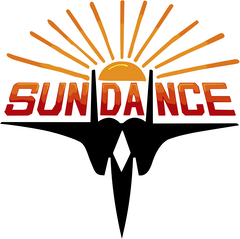 KASPRZYK
KASPRZYK